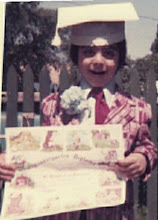

...well perhaps every painting does not tell a story, but many do. I recently visited the Art Institute of Chicago. A long time ago I figured out that the best way to experience the "Toot" is to try to see a little bit during each visit. The collections are so expansive and varied that trying to take it all in at once is impossible and leads to burnout. My best experiences at the Toot have been when I have popped in for a couple of hours and have focused on no more that two or three areas. Every time I go, I discover something new or see something again with a fresh perspective.
On my most recent visit I discovered the artist Archibald Motley. He was part of the Harlem Renaissance and was known for his paintings of African American nightlife. In fact, the painting that caught my attention is titled "Nightlife". The museum caption for this painting lauds Motley's use of color and artificial light. The caption compares Motley's use of light in Nightlife to another painting located in the next room, Edward Hopper's iconic "Nighthawks". What drew me into both of these paintings were the scenes themselves. Both of these paintings are inhabited with strong characters and suggested stories. Look at the scene at the bar in Nightlife. There are two women sitting at the bar dressed to kill and having a smoke. One of the women is looking intenesly at a man standing a few feet away, who, in turn, is looking away from the woman and has his arm outstretched towards another woman who is dancing with another man. The woman at the bar is looking at the man with what may be described as exacerbation or intense annoyance. Maybe he is her man who is trying to make time with another woman. Maybe she is obsessed with the man who doesn't even know how she feels. Towards the middle of the painting there is another man sitting alone at a table, smoking and having a drink with his eyes closed. He is surrounded by people dancing and in happy revelry. He looks like the saddest and loneliest person in the word. He may have lost someone close and dear to him through some foolish action of his.
Nighthawks presents 4 people at a diner late at night. A man and a woman sit together; another man sits away from them with his back to the viewer; the diner employee looks like he is preparing something or putting something away. It is unclear if the characters are acquainted with each other, but there is definitely a tension in the scene. The couple may be on the verge of a split or maybe they are just bored with each other. Does the mysterious third diner patron bear them any ill will? Is the employee part of their lives in some way?
Unlike reading a text narrative, these type of paintings allow the viewer to construct his own story within the context of the scene presented by the artist.
